AskDoes a knee brace treat the knee joint?
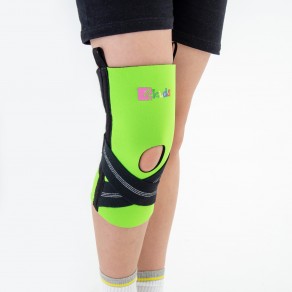
- Knee braces for children
- Knee braces for children
- Splints for children
- When should orthopedic devices be used?
- News about
- How the product works
- design features
- Features of orthoses for the lower and upper limbs
- Orthoses for the lower limbs in children - selection and effect
- Advantages
- Social Protection Departments
- Reimbursement of the cost of purchasing prostheses and orthopedic devices for people without disabilities (except dental and eye prostheses) (enter such a request into the search engine with the title)
- care instructions
- Brief information about the cause of pain
- Recovery bands and their recommended use
- fixation
- correction
- Support
- warm up
- knee brace
- Children's orthosis SKN 401: price and sales
- SKN 401 children's suspenders: size information
- indications
- species
Knee braces for children
-> Ligament injuries 23 fractions 3 arthrosis 3 strain 19 arthrosis 13 paresis 2 paralysis 2 bruises 7 synovitis 3 tendonitis 5 Osgood-Schlatter disease 1 CEREBRAL PALSIA 1 neurological disorders 2 Kneecap subluxation 4 After reconstruction of knee ligaments 1 After injuries and operations 1 synovitis 2 Juvenile rheumatoid arthritis 1
- Posture corrections and braces
- cervical bandages
- posture corrections
- posture corrections
- Strain bandages
- chest and lumbar bandages
- back bandages
- Lumbar and sacral splints
- ankle bandages, orthoses
- thumb braces
- Laced ankle braces
- Split ankle wraps
- Sporty bandages
- Orthoses to immobilize the ankle
- ankle bandages
- Ankle bandages for clubfoot
- Orthoses for heel bone fractures
- Orthoses for lateral stabilization
- Joint orthoses for the ankle joint
- Elastic ankle brace
- ankle brace
- Orthoses for metatarsal fractures
- Ankle brace for children
- Shoulder bandage for children
- Elbow bandage for children
- Children's elbow bandages, orthoses
- Children's wrist bandages, orthoses
- Ankle bandages for children
- Knee bands for children
- Shoulder supports and orthoses for children
- Hip orthoses for children
- Children's knee pads for sports
- Diaper bandages for children
- Suspenders for children
Knee braces for children
Knee splints for children are used for injuries and diseases of the knee joint. They differ primarily in their anatomical adaptation to the nature of the child's bones and joints as well as in their bright, social design, which is appreciated by children. The bandage is placed around the leg as a tight bandage and fastened with Velcro straps.
The human knee joint is an important part of the musculoskeletal system, which is responsible for connecting the lower limbs to the thigh, as well as flexing the leg when walking and transferring body weight to the lower limbs. Damage and abnormalities can cause pain and discomfort and make it difficult to walk independently.
Splints for children
Splints for children are used in some cases to treat and prevent injuries and abnormalities of the musculoskeletal system in children. They are products of the orthopedic joint protectors category with a rigid or flexible base whose main function is to support and stabilize the joint or limb in the correct physiological position.
The product partially or completely restricts the mobility of the injured area, thereby increasing effectiveness and speeding up recovery time. They are made from modern materials, take into account the child's anatomy and are safe and comfortable to use. Children's orthoses are usually made of medical knitted fabric, neoprene fabric, hygienic plastic and aluminum parts.
When should orthopedic devices be used?
The use of body orthoses may be necessary in many different cases due to injuries or congenital or acquired developmental abnormalities in a child:
- Congenital diseases of the musculoskeletal system;
- Fractures of one or more bones;
- Bruises, sprains and dislocations;
- Rehabilitation after an operation.
The success of rehabilitation or recovery treatments depends on the correct use of the product and compliance with the recommendations of the treating physician.
News about
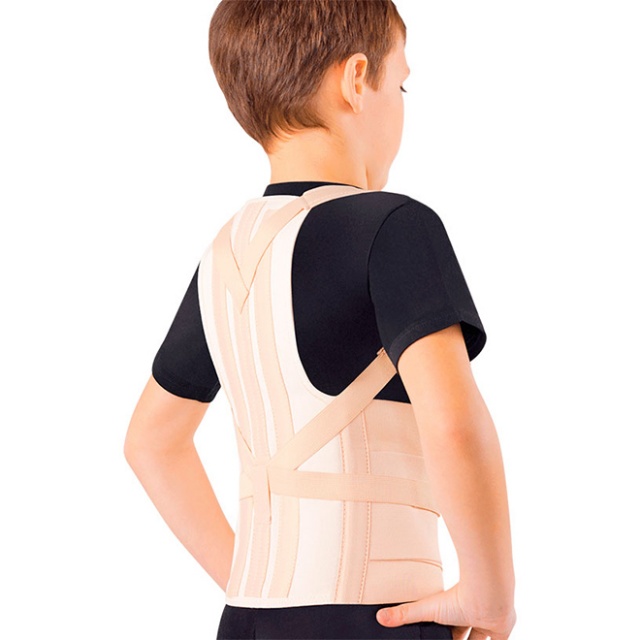
Children's lumbosacral orthosis - a product for the treatment of curvature.
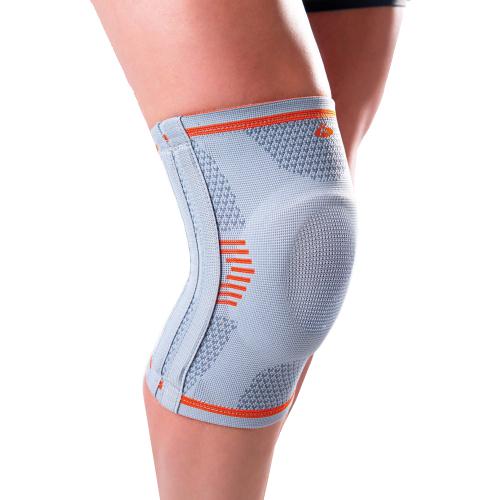
Learn how to keep your knee joints healthy.
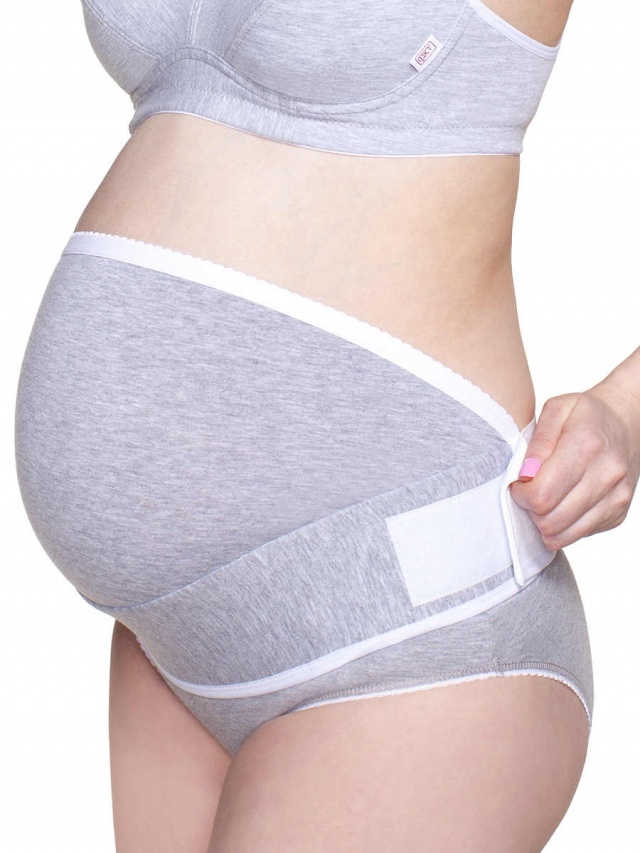
Which models of prenatal orthoses are available.
How the product works
The main effect of wearing the orthosis is to completely immobilize the joint. The result:
- Reduces the risk of accidental injuries.
- The possibility of bone displacement due to fractures is excluded.
- The regeneration of the injured joint and the surrounding tissue is accelerated.
- The injured area of the limb is relieved (the body weight is transferred to the orthosis), but the supporting function of the limb is restored.
- The joint and other damaged tissues have the opportunity to regenerate.
- Visual control is not affected.
- Allows therapeutic measures (massage, drug treatment).
- Does not affect blood flow at the application site.
All this distinguishes this type of product from a plaster cast. In the event of a serious knee injury, it is recommended to switch to a cast as soon as possible.
design features
In contrast to other rigid bandage models, the orthosis has no joints. It is usually a collapsible structure consisting of a rigid frame and fastening straps. The frame can be made of metal or plastic. In both cases, it is covered with a special coating that feels pleasant on the skin (and also protects the frame from minor mechanical damage, extending the life of the product).
The removable construction allows the orthosis to be put on and taken off quickly. In the later stages of rehabilitation, the child can remove and put on the orthosis independently, which makes caring for the patient much easier.
Most models, such as the SKN 401 children's orthosisare characterized by their durability and reliability, so that the joint remains fixed even in emergency situations.
The specific orthotic model is selected by the doctor based on the diagnosis and the current condition of the patient.
Features of orthoses for the lower and upper limbs
Orthoses for the lower limbs in children, like hand splints, are special devices that limit the mobility of a joint. It can also be fixed in a certain position or prevented from bending more than a certain amplitude.
There can be many reasons for prescribing this type of orthopedic device. These include trauma, surgical procedures, musculoskeletal disorders and many others.
The products presented in our catalog differ in many ways:
- Type of product. It determines the type of application. It can range from an aid for a specific joint to a comprehensive system that covers the entire limb.
- The material. Both soft and hard materials can be used. It all depends on what effect you want to achieve by wearing the product.
- Specificity of effect. It can consist of placing the joint in a certain position, limiting its mobility within a certain amplitude and much more.
Orthoses for the lower limbs in children - selection and effect
The choice of a specific orthosis for the lower limbs in children should be carried out strictly according to the instructions of the attending physician. A number of effects can be achieved by wearing orthoses:
- Restriction of joint mobility. Prevention of joint injuries and acceleration of the healing process.
- They bring the joint into the correct position. In medicine, they are used for the gentle correction of curvatures and other similar pathologies.
- Complete immobilization. May be necessary for various types of diseases that can cause limb instability, severe pain and other negative effects on the body.
Advantages
Our catalog offers a variety of products from renowned brands with a good reputation. There are a number of advantages in favor of ordering goods:
Social Protection Departments
The Department of Social Protection of the Sverdlovsk and Yekaterinburg Regions (Decree of the Sverdlovsk Regional Government of April 20, 2016. N 273-PP.
Reimbursement of the cost of purchasing prostheses and orthopedic devices for people without disabilities (except dental and eye prostheses) (enter such a request into the search engine with the title)
It is granted to citizens residing in the Sverdlovsk region (any region, any city, settlement) who do not have a disability group, but need prosthetic and orthopedic aids for medical indications.
Required documents for compensation (no age limit)
- Application for compensation for OTP costs (.docx 24.34 KB)
- Passports of adult family members (original and copy of name and registration page)
- Medical certificate confirming the medical indication for a prosthesis or orthopedic aid
- Evidence of payment for the prosthesis/orthopedic aid (cash receipt, receipt and proof of purchase indicating the name of the prosthesis/orthopedic aid, its type and model and the date of purchase)
- Child's birth certificate (original and copy)
- Residence certificate confirming family composition (valid for 10 days)
- Certificate of dissolution of marriage, certificate of paternity - in the case of families with only one parent (original and copy)
- Marriage certificate with different surnames in the family (original and copy)
- Documents (references) confirming the income of each family member for the three calendar months preceding the month of claiming the benefit
- Consent of adult family members to the processing of personal data
- Account details at a credit organization
- SNILS
- Certificate from the pension fund that you are not disabled
care instructions
Flexible bandages are washed by hand with normal soap and warm water at up to 40⁰ C and then dried horizontally without wringing and away from intense heat sources (radiators, etc.). Rigid dressings can be cleaned with a damp sponge using antiseptic solutions.
For more detailed information on care recommendations for specific types of bandages, consult the instructions always provided by the manufacturer.
Brief information about the cause of pain
A good knowledge of the cause of the pain is the most important prerequisite for choosing a knee brace. Pain in the knee joint can arise from the following causes:
- injuriesFracture or tear of the kneecap, dislocation, torn ligaments or meniscus, ligament stretches and bruises.
- Inflammatory diseasesArthritis, periarthritis, synovitis, bursitis, tendinitis.
- Degenerative and dystrophic processesOsteoarthritis, gonarthrosis, Kenig disease, Osgood-Schlatter disease, bone tuberculosis.
- Vascular abnormalitiesA rare but occasionally occurring manifestation of venous anomalies of the lower extremities.
- oncologyOsteochondromas or Baker cysts: lumpy, benign growths.
If you have pain in your knee joint, you must first see a doctor who will examine the cause of your problem and then decide what type of knee brace you need and whether you even need one.
Recovery bands and their recommended use
All orthopedic knee braces can be divided into four main groups according to their function: supportive, corrective, supportive and warm-up. Depending on the specific cause of knee joint pain, one type or another may be required.
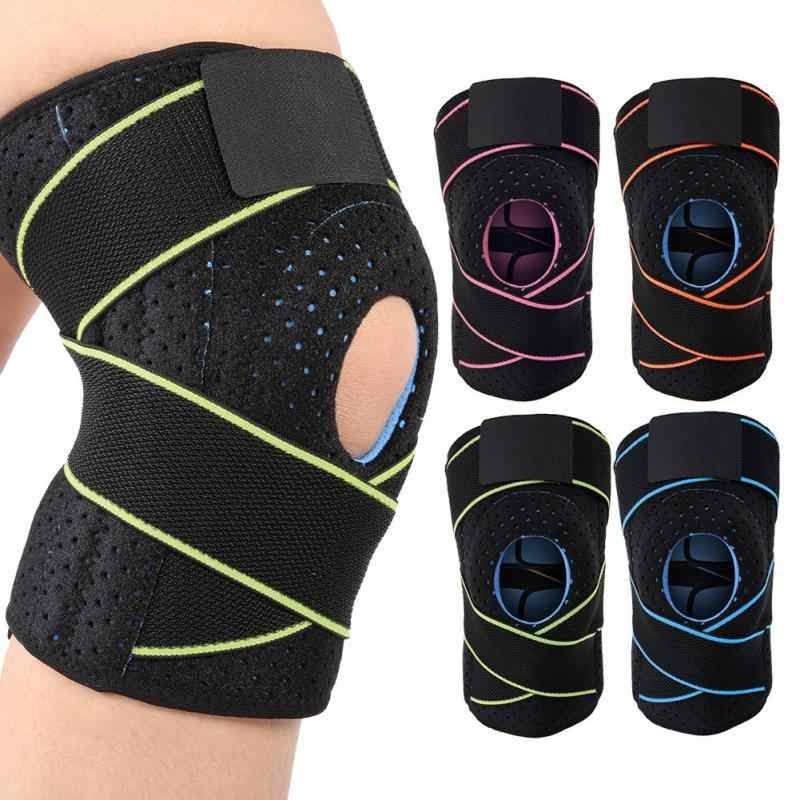
fixation
The equivalent of a plaster cast, allowing complete or partial immobilization of the joint. Knee orthoses are primarily used for serious injuries such as fractures, broken bones, torn ligaments or meniscus.
correction
Limits the mobility of the knee joint and prevents unwanted movements that could damage it. Suitable for use in the post-traumatic period and in the rehabilitation period, as well as in severe osteoarthritis, bone tuberculosis or Osgood-Schlatter disease in which the joint is damaged.
Support
Reduces the load on the knee joint and keeps it in the correct anatomical position to a certain extent. They are used in the final stages of rehabilitation after serious injuries and minor injuries such as sprains or bruises.
Knee pads are also an indispensable part of the treatment of chronic arthritis, primary arthritis and tendonitis.
warm up
Improve blood circulation and relieve pain. Mainly used for acute conditions: 'fresh bruises', acute osteoarthritis, weather-related rheumatic pain, etc. Very often, supporting patellas have a warming effect.
knee brace
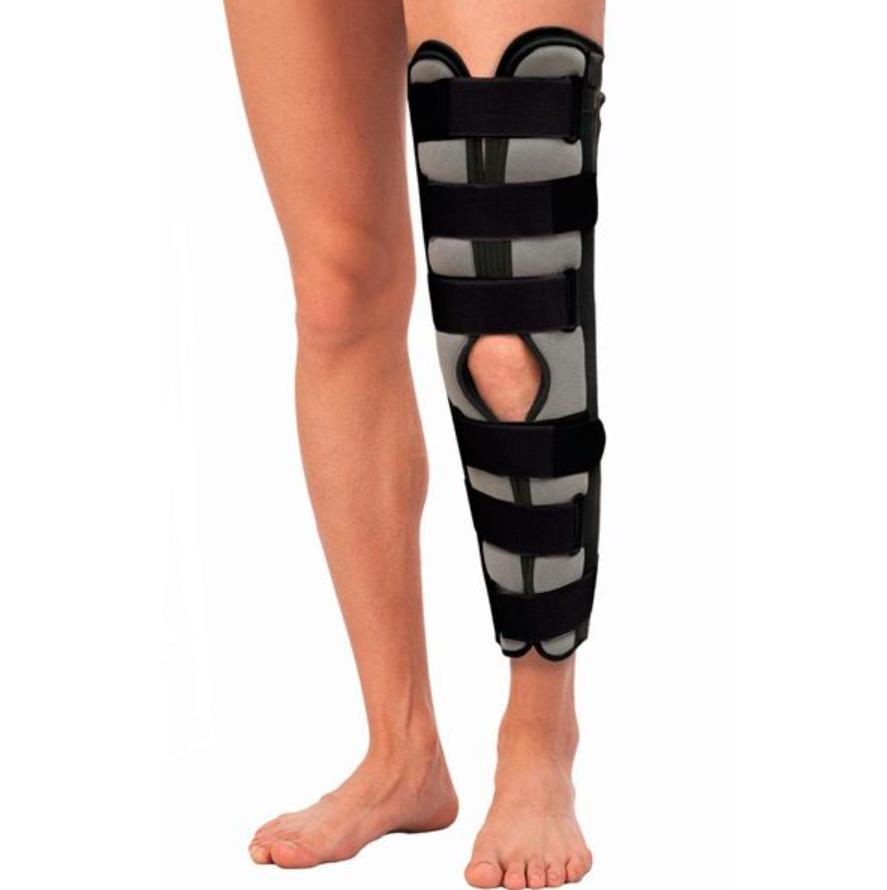
A knee brace or knee orthosis is used to immobilize the leg and knee joint.
It is a rigid orthosis that covers not only the knee, but also the thigh and shinbone with a wide fixation system. It is used as a replacement for a plaster cast and goes far beyond its functionality:
- The orthosis makes it possible to adjust the fixation of the knee and bone in fractures without dislocation or rupture of ligaments according to individual parameters;
- features a stiffer and more ergonomic seat;
- can be removed for cleaning or hygiene purposes;
- avoids skin problems under the bandage or pressure points.
The orthosis hinders full blood circulation less and generally offers more comfort.
In our catalog you will find almost all of the above models of kneecaps, as well as ankle orthoses and foot and toe orthoses. All sizes available for children and adults.
Children's orthosis SKN 401: price and sales
Buy the SKN 401 tunic in our orthopedic shop. We offer you the highest quality products at an affordable price. The price for SKN 401 is stated on this page (see above). To order, add the item to the shopping cart or call our managers. If necessary, you can also receive prior telephone advice on the selection and characteristics of orthopedic accessories. Delivery takes place in the shortest possible time and to any city in Russia.
There is a toll-free number for the regions 8 800 550-52-96.
SKN 401 children's suspenders: size information
Size for children Size (cm) 35 Hip circumference (cm) 32-47 Shin circumference (cm) 27-43 You can ask any question about the product or the shop.
Our highly qualified team will be happy to advise you.
indications
Wearing a knee brace is indicated in the following situations:
- dislocations or fractures;
- torn ligaments or tendons;
- arthritis, osteoarthritis, bursitis, synovitis and rheumatic diseases;
- Rehabilitation after operations.
warningDo not attempt to self-prescribe a knee brace if you have knee pain, inflammation, or swelling.
species
Knee braces are divided into three main groups:
- Supportive. Above all, they relieve the knee without severely restricting its mobility. They fix the joint to a certain extent and protect it from damage caused by careless movements.
- Fixing. Partial or complete limitation of mobility of the knee joint. Can be used to simulate the correct position of the kneecap.
- Corrective. Limits the mobility of the joint, with the possibility of changing the flexion/extension angle as the tissue regenerates.
Classification of orthoses into:
- How to wear a knee brace for osteoarthritis.
- What is a knee brace?.
- knee brace.
- Knee splint for knee arthrosis.
- How to properly wear a knee brace.
- What are knee braces?.
- ribbons for children.
- ankle braces for children.
